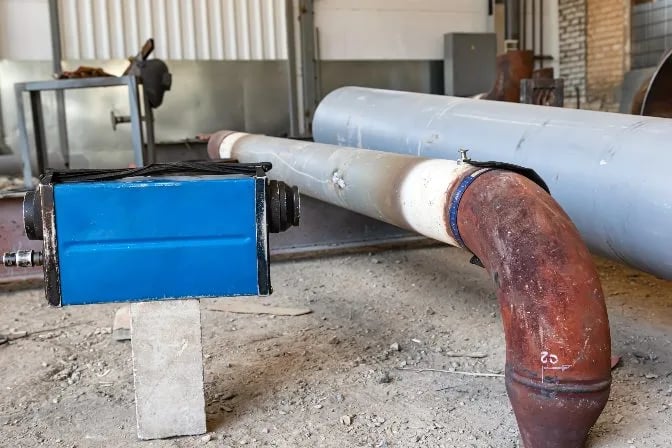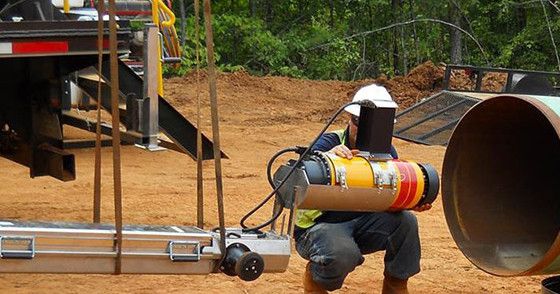Protect Your Investment: Thorough Pipeline Welding Inspection for Peace of Mind
Protect Your Investment: Thorough Pipeline Welding Inspection for Peace of Mind
Blog Article
Comprehensive Summary of Pipe Welding Evaluation Procedures
In the world of pipe building and construction, ensuring the stability and security of welded joints is vital. Pipe welding examination treatments play an essential role in ensuring that welded connections satisfy stringent market standards and requirements. From precise pre-welding assessments to thorough post-weld analyses, a distinct assessment procedure is necessary for preserving the structural stability of pipelines. Understanding the details of welding examination treatments is not just a regulative demand however also a fundamental aspect of upholding the reliability of these vital facilities.
Pre-welding Examination Preparations
Before starting the welding process, thorough pre-welding assessment preparations are necessary to make sure the integrity and high quality of the weld joint. These preparations include a meticulous exam of the materials to be bonded, the welding devices, and the job atmosphere. The materials have to be inspected for any kind of defects, pollutants, or inconsistencies that can compromise the weld. This includes monitoring for proper product grades, measurements, and surface area problems. Pipeline Welding Inspection. Additionally, the welding tools needs to be examined to validate that it remains in great working problem, calibrated appropriately, and appropriate for the particular welding process. Any type of issues with the tools must be addressed quickly to protect against defects in the weld. Lastly, the job environment must be assessed for tidiness, appropriate ventilation, and precaution to guarantee a favorable setting for the welding operation. By carrying out thorough pre-welding assessment prep work, prospective problems can be recognized and resolved early on, resulting in dependable and premium weld joints.
Welding Procedure Certification
Comprehensive pre-welding assessment prep work lay the structure for the crucial procedure of Welding Treatment Credentials, making sure the stability and top quality of the weld joint. Welding Treatment Qualification (WPQ) is a crucial action in the welding procedure that involves screening and licensing welding treatments to assure they meet particular criteria and requirements. The WPQ procedure generally consists of welding procedure spec development, welding procedure credentials testing, and paperwork of the outcomes.
During welding procedure spec growth, important information such as the welding procedure, welding materials, joint style, and welding criteria are specified to create a detailed procedure. Consequently, welding treatment credentials testing is conducted to verify the recommended procedure's stability. This screening commonly involves welding test promo codes that are subjected to numerous mechanical and non-destructive examinations to examine the weld's top quality and adherence to the specified requirements.
In-process Weld Inspection
Throughout the welding process, in-process weld examination plays a critical role in making certain the quality and stability of the weld joint - Pipeline Welding Inspection. This kind of inspection entails monitoring the welding parameters, evaluating the weld bead development, and spotting any kind of potential issues or discontinuities as they take place. By conducting in-process weld examinations, welding drivers can without delay deal with any more helpful hints issues that might occur, thereby ensuring and preventing more flaws that the final weld meets the required requirements
Common techniques made use of for in-process weld evaluation consist of visual assessment, fluid penetrant testing, magnetic fragment testing, ultrasonic screening, and radiographic screening. Overall, in-process weld assessment is important for preserving the top quality and reliability of bonded pipes.
Non-destructive Testing (NDT)
Non-destructive Testing (NDT) is a critical technique used in pipe welding evaluation to assess the honesty of weld joints without creating damage to the bonded framework. By utilizing different NDT methods, assessors can evaluate the high quality of welds and identify any flaws or discontinuities that may jeopardize the structural strength of the pipe. Usual NDT approaches used in pipeline welding evaluation consist of Radiographic Screening (RT), Ultrasonic Screening (UT), Magnetic Fragment Testing (MPT), Liquid Penetrant Testing (LPT), and Visual Testing (VT)
RT includes making use of X-rays or gamma rays to create pictures of the interior structure of the weld, enabling examiners to discover flaws such as porosity, splits, or insufficient blend. UT makes use of high-frequency acoustic waves to find imperfections under the surface area of the weld, supplying detailed details about the size and place of issues. MPT and LPT are used to determine surface-breaking issues by using penetrant fluids or magnetic fragments to the weld location. In addition, VT involves visual assessment of welds to recognize any kind of noticeable imperfections.
Post-weld Assessment and Paperwork

Documents of post-weld assessment findings is essential for keeping quality special info assurance records and ensuring compliance with sector standards and laws. In-depth reports need to include details regarding the inspection methods made use of, the place and nature of any flaws found, and any type of corrective actions taken - Pipeline Welding Inspection. Correct paperwork not just serves as a document of the weld's quality however additionally aids in future maintenance and examination processes
Final Thought

In final thought, pipeline welding assessment procedures play a critical function in ensuring the top quality and stability of welds. On the whole, adherence to proper assessment protocols is crucial to the success of pipeline welding jobs.
From meticulous pre-welding assessments to comprehensive post-weld evaluations, a distinct inspection procedure is important for keeping the architectural soundness of pipes. By performing in-process weld examinations, welding drivers can immediately resolve any type of problems that may develop, consequently stopping additional problems and ensuring that the last weld fulfills the required specifications.
Usual techniques used for in-process weld inspection include aesthetic examination, fluid penetrant testing, magnetic fragment testing, ultrasonic testing, and radiographic screening.Non-destructive Testing (NDT) is a vital method used in pipeline welding examination to examine the integrity of weld joints without creating damage to the welded framework. Post-weld inspection entails different methods to assess the welds for issues, including aesthetic assessment, dye penetrant screening, magnetic bit testing, ultrasonic screening, and radiographic testing.
Report this page